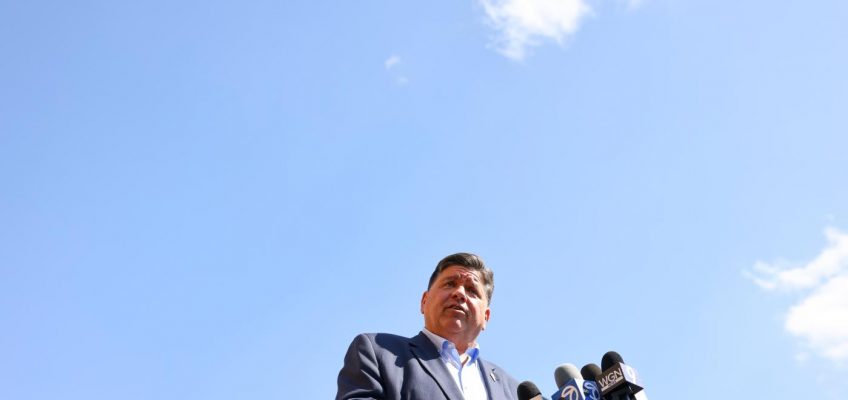Funny thing about Roald Dahl. Describe one of the English author’s macabre tales to a parent and they might be horrified that their child would be exposed to such a story. But the kids are usually just fine with it.
That has a lot to do with the sense of playfulness with which Dahl permeated his children’s books, and “The Enormous Crocodile” is a prime example. No story of his was more clearly designed for younger readers, yet the central figure is a beast intent upon eating a child.
Siobhan Athwal, left, and Ryan Crellin-Simpson in “The Enormous Crocodile,” a musical adaptation of Roald Dahl’s children’s book from England’s Roald Dahl Story Company, which will receive its U.S. premiere at Children’s Theatre Company. The production will run through Nov. 23, 2025, at the Minneapolis theater. (Glen Stubbe / Children’s Theatre Company)
But fear not: The theatrical adaptation currently being presented at Children’s Theatre Company’s smaller street-level space is wonderfully fun for all ages. Sporting a clever script and marvelously imaginative puppets, it’s an hour-long, smile-inducing delight.
Friday night marked the first U.S. performance of a production that comes to us from England, where it was co-produced by Regent’s Park Open Air Theatre and Leeds Playhouse. Overseeing the staging is the Roald Dahl Story Company, which, interestingly, is owned by Netflix. But there’s nothing corporate about what’s onstage at CTC: It still has the homespun air of a performance in the park, intent upon engaging with the children in the audience and throwing in some funny easter eggs for the adults, too.
Yet don’t mistake its groundlings-friendly feel for a lack of professionalism, as the résumés of several among its cast and crew list stints with two of the world’s great theater companies, the Royal Shakespeare Company and the National Theatre of Great Britain. Be it in the varied characterizations, colorful choreography, rapid-fire costume changes or a dazzling design scheme, this is a slick staging.
Related Articles
Review: ‘A Beautiful Noise’ paints a dark picture of superstar Neil Diamond
Theater review: ‘Addams Family’ isn’t curious or kooky enough
Theater review: Park Square offers a riotous love letter to theater with ‘It’s Only a Play’
Review: History Theatre misses the mark with ‘Don’t Miss Doris Hines’
Theater review: Guthrie gives a classic a powerful update with ‘A Doll’s House’
The story is a simple one: The largest crocodile in the jungle has decided to consume a child for lunch. That seems an unlikely option until a troop of “Jungle Juniors” arrives for a campout in the wild. But the other anthropomorphized animals overcome their fears to save the kids.
Employing an Afropop-tinged score by Ahmed Abdullahi Gallab and a witty script and lyrics by Suhayla El-Bushra, there’s cleverness around every corner. For example, the story begins at a dental clinic where the crocodiles are having their teeth cleaned by birds. The Cockney crocs and Scottish birds introduce us to the idea that this cast will use a plethora of (all easily understandable) accents, most humorously the French-flavored snails.
Each animal is an imaginative amalgam of human and puppet. The title character is a stage-length beast built around a rolling chair on which the imperiously expressive Taya Ming sits and dreams up serving suggestions for her meal of children.
Blocking her path to this repast are Nia Stephen’s towering elephant; Ryan Crellin-Simpson as an endearing hippo who farts when frightened; Alison Arnopp as a vainly insecure avian showgirl; and Siobhan Athwal pulling impressive double duty as a monkey straight off a nightclub dancefloor and the adult troop leader.
Speaking of that troop, they’re the funniest puppets of all, bearing adult heads and child bodies. Their appearance was one of many instances in which laughter rang out from both adults and children at the opening night performance. Throw in some clever, catchy songs and you have the makings of a very enjoyable family theater outing.
Roald Dahl Story Company’s ‘The Enormous Crocodile’
When: Through Nov. 23
Where: Children’s Theatre Company, 2400 Third Ave. S., Minneapolis
Tickets: $79-$25, available at 612-874-0400 or childrenstheatre.org
Capsule: Imaginative and tuneful, it’s great all-ages fun.
Rob Hubbard can be reached at wordhub@yahoo.com.




